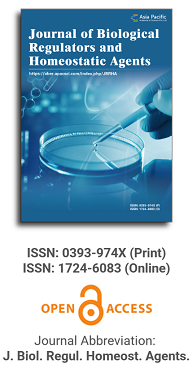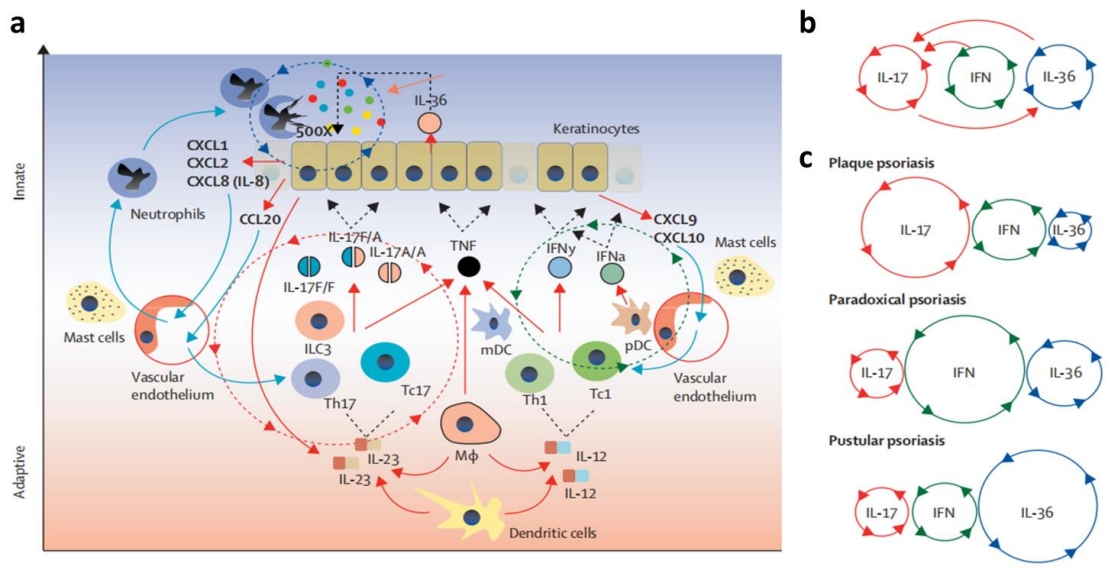
Publication Frequency
Quarterly since 2025
Journal Articles
Search
Search scope
Journal Center
Asia Pacific Academy of Science Pte. Ltd. (APACSCI) specializes in international journal publishing. APACSCI adopts the open access publishing model and provides an important communication bridge for academic groups whose interest fields include engineering, technology, medicine, computer, mathematics, agriculture and forestry, and environment.
Volume Arrangement
2025
Featured Articles

Psoriasis is a common, chronic, and inflammatory skin disease. Macrophages account for about 61.3% of the inflammatory cells infiltrating psoriatic lesions. Modulating macrophage polarization, inhibiting their infiltration, and targeting the secretion of inflammatory factors and associated inflammatory pathways by these cells can alleviate psoriasis symptoms and inflammation. Moreover, nanomaterials as novel drug carriers, offer unique advantages such as large surface area, easy modification, high biocompatibility, good biodegradability, enhanced systemic adsorption, etc. Nanomaterials have great potential for efficient drug delivery and release, as well as improving therapeutic efficacy while reducing adverse effects. By systematically addressing the role of macrophages in psoriasis pathogenesis and the potential of nanomaterials in treating psoriasis through modulating macrophages, this review enhances our understanding of the disease mechanism and holds promise for novel therapeutic breakthroughs and advancements in the future treatment of psoriasis.
KDM6B Promotes the Development, Progression andMetastasis of Oesophageal Cancer throughDemethylation of Histones in the LDHA PromoterRegion
Article ID: 3510
Vol 39, Issue 1, 2025
DOI: https://doi.org/10.23812/j.biol.regul.homeost.agents.20253901.11
Vol 39, Issue 1, 2025
Received: 26 October 2022; Accepted: 26 December 2022; Available online: 16 January 2025; Issue release: 31 January 2025
Download PDF
Abstract
Background: Esophageal squamous cell carcinoma (ESCC) is a strongly metastatic and fatal cancer. Currently, the mechanisms
underlying the pathogenesis of ESCC are poorly understood. Lysine-specific demethylase 6B (KDM6B) plays a key role in the
occurrence and development of various human diseases, such as cancers, immune diseases and developmental diseases. Studies
have confirmed that KDM6B may exhibit both tumour-suppressive and oncogenic activities in different cancer types. However,
the expression and role of KDM6B in ESCC remain unclear.
Methods: KDM6B expression was analysed using The Cancer Genome Atlas (TCGA) database, and the correlation between
KDM6B mRNA expression and prognosis was analysed. The expression of KDM6B in Eca109 and TE11 ESCC cells and ESCC
tissues was evaluated using immunohistochemical (IHC) and Quantitative Real-time PCR (RT‒qPCR) analyses. In vitro assays
were further performed to reveal the functions and characterize the upstream and downstream regulation of KDM6B expression.
Results: KDM6B was overexpressed in stage T3/T4 as well as N2/N3 ESCC tissues relative to stage T1/T2 and N1/N2 ESCC
tissues, respectively, and this overexpression was linked to worse prognosis of ESCC. Inhibiting KDM6B expression significantly
impaired the proliferation and metastasis of ESCC cells. Lactate dehydrogenase isoform A (LDHA) plays a critical role in tumour
aerobic glycolysis. The expression of LDHA was inhibited in ESCC cells to assess its role in ESCC proliferation. In this study,
KDM6B knockdown suppressed not only LDHA expression but also ESCC cell proliferation.
Conclusions: Based on these results, we speculate that KDM6B might be a novel therapeutic target for ESCC.
Keywords
ESCC; KDM6B; LDHA; proliferation; metastasis
References
Supporting Agencies
Copyright (c) 2025 Cai-Lin Zhu,Wei-Yun Bi,Hong-Tao Li,Zhi-Yong Zhang

This site is licensed under a Creative Commons Attribution 4.0 International License (CC BY 4.0).
Editor-in-Chief

Medical Genetics, University of Torino Medical School, Italy
Co-Editor-in-Chief

Department of Biomedical, Surgical and Dental Sciences, University of Milan, Italy
Indexing & Archiving
News & Announcements
2025-02-01
In addition to the first issue that has already been published by the original publisher, there will be four more issues released this year, with scheduled publication dates in March, June, September, and December respectively.
2025-01-21
Starting from Volume 39 Issue 2 (2025), the ownership of Journal of Biological Regulators and Homeostatic Agents (ISSN: 0393-974X (P); 1724-6083 (O)) will be transferred from Biolife Sas to Asia Pacific Academy of Science Pte. Ltd. As of 21 January 2025, authors should make submissions to the new journal system and follow the author guidelines. Asia Pacific Academy of Science Pte. Ltd. will take over the publication of manuscripts being processed.

